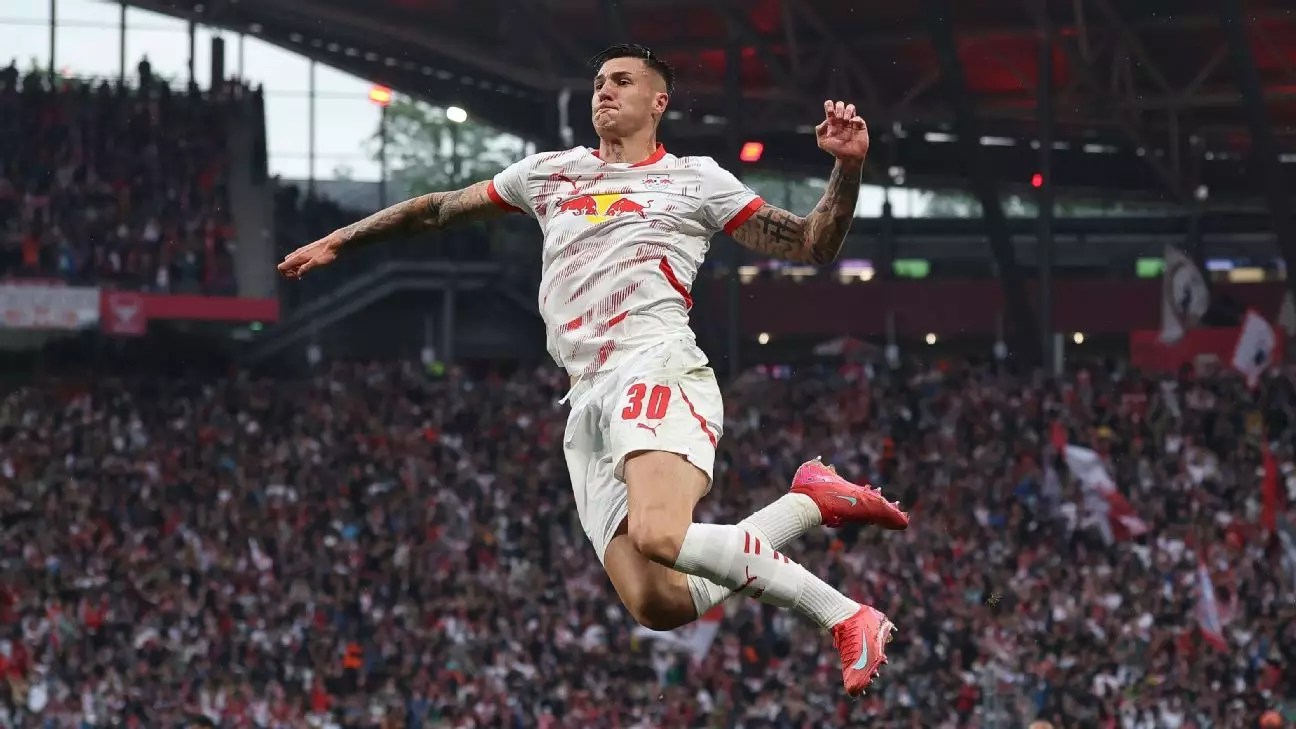As the summer transfer window intensifies, Arsenal stands on the precipice of securing a monumental signing that could shape their offensive strategy for years to come. Reports indicate that the Gunners are re-engaging in negotiations with RB Leipzig to acquire 22-year-old striker Benjamin Sesko. This Slovenian international, who netted an impressive 21 goals last season, including four in eight Champions League appearances, is seen as a pivotal addition to Mikel Arteta’s squad. However, optimism within the club is tempered by the harsh reality of financial negotiations, with Leipzig reportedly holding out for a staggering €100 million to part ways with their star forward. This potential transfer underscores Arsenal’s determination to reinforce their attacking arsenal and push for greater success in both domestic and European competitions.
It’s crucial to acknowledge the pressures that accompany such high-profile transfers. A player of Sesko’s caliber not only must deliver on the pitch but also integrate seamlessly into a squad that has ambitions of reclaiming past glories. The stakes are high, and the spotlight is bright. As the Gunners position themselves as serious contenders in the Premier League, the added pressure on Sesko could either catalyze his growth or burden him with unrealistic expectations.
Manchester United’s Goalkeeping Dilemma
In a parallel narrative, Manchester United is strategically considering a shift in goalkeeper personnel as they explore options to replace Andre Onana. Recent struggles have prompted the club to set its sights on Barcelona’s Marc-André ter Stegen, a shot-stopper with a wealth of experience from his tenured career at Camp Nou. Understanding the challenges Onana has faced should not lead to hasty decisions; rather, the club must weigh the merits of potential replacements wisely.
Ter Stegen’s background is compelling, having accumulated over 290 LaLiga appearances and returning to fitness after a protracted injury layoff. His acquisition could stabilize a critical position that directly influences match outcomes. However, this pursuit raises questions about the long-term vision for United’s goalkeeping strategy. Are they merely seeking a quick fix, or do they envision a transformation that encompasses youth development alongside established talent?
In an age where goalkeeping has evolved into a tactical position requiring distribution skills and game-reading capabilities, ter Stegen’s prowess could serve to enhance a defensive unit that has lacked consistency. The significance of such a decision cannot be overstated, as the club seeks to solidify its ambitions in both domestic and European theatres.
Real Madrid’s Youth Investment
Meanwhile, Real Madrid continues its long-standing tradition of investing in youth talent with the reported signing of Franco Mastantuono from River Plate for €45 million. This forward-looking approach explicitly highlights Madrid’s commitment to developing emerging stars rather than solely focusing on seasoned veterans. The decision to allow Mastantuono to accrue experience in the FIFA Club World Cup before relocating to Spain indicates a thoughtful strategy that prioritizes player readiness.
Madrid’s battle to secure Mastantuono against fierce competition from clubs like Paris Saint-Germain and Manchester United illustrates the appeal of their storied legacy. Success is not built merely on present-day success but also on the cultivation of burgeoning talent who could eventually become linchpins of the squad. By trusting in their youth development, Los Blancos set themselves up for sustained prosperity in the tumultuous world of football economics.
Transfer Rejections: Osimhen’s Decision to Stay
In another compelling development, Napoli’s Victor Osimhen turned down a lucrative offer from Al Hilal, demonstrating a commitment to stay in Europe and continue building his reputation within one of football’s most competitive landscapes. Having enjoyed a breakout season with Galatasaray, where he notched 26 goals in 30 league appearances, Osimhen’s choice speaks volumes about his aspirations to compete at the highest level.
This decision is not merely about the money but reflects a strategic mindset focused on career progression. The likes of Chelsea and Manchester United have shown interest, highlighting his desirability as a player with immense potential. Conversely, Osimhen’s reluctance to join clubs that might not align with his competitive ambitions underscores a growing trend among players prioritizing career fulfillment over financial gain.
The Emerging Landscape of European Football Transfers
As this summer transfer window unfolds, the narrative is being shaped by clubs re-evaluating their goals and implementing tactical shifts that could redefine their competitive stances. From Arsenal’s pursuit of Sesko to Manchester United’s quest for a dependable goalkeeper, these maneuvers resonate beyond the immediate needs of the teams involved. The cyclonic nature of transfers encapsulates a broader dialogue about strategy, financial prudence, and the quest for innovation within the sport.
With various clubs actively engaging in the market, it remains to be seen how the integration of new players will impact team dynamics and performance levels across Europe. The decisions made now will invariably ripple through the seasons to come, emphasizing the importance of calculated risks in a sport where fortunes can change at lightning speed.


Leave a Reply